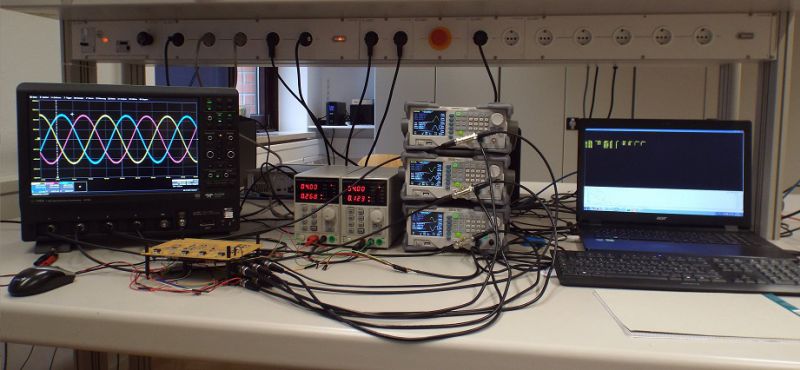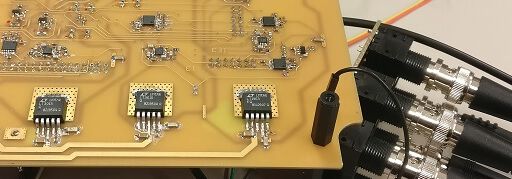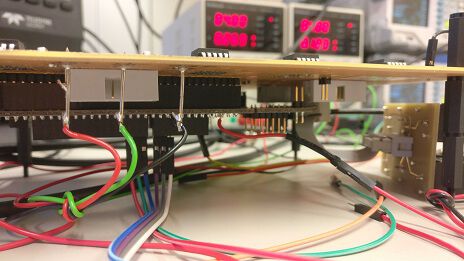Energy Measurement Technology
A frequent requirement in the field of energy measurement technology is the measurement of voltage and current in a three-phase network. If frequency converters are used, base frequencies between 5Hz and 100Hz must be expected. The regular voltage is 400Vrms, however, significantly higher voltages can occur due to reflections on the supply lines. In practice, the waveform of the signals can deviate significantly from the ideal sinusoidal signal.
The measuring electronics can be divided into two stages:
- Pre-divider, current sensors: A part directly connected to the mains voltage, in this case appropriate precautions must be taken with regard to contact safety. In addition, the conductor tracks must be designed for the high currents.
- Evaluation electronics: The evaluation section, here the signal evaluation is operated with the aid of ADCs, microcontrollers as well as analog and digital filters. The measured values are then either shown on a display or sent via network to a control center. For special requirements, analog computers can also be used, which may considerably simplify the requirements for the digital part.
The following picture shows a measuring station for verification of the evaluation electronics. In the setup, 3 voltages as well as 3 current signals are generated by arbitrary waveform generators. All signals are synchronous to each other, the shape of the signals can deviate from the ideal sine form depending on the requirements. In principle, measurement signals recorded from existing systems can also be used.

Customized hardware solutions
The measurement solution developed by RF-Frontend can be used for a wide range of measurement tasks in three-phase power supply systems. The following measurements can be made:
- Voltages of all three phases (RMS voltage, peak voltage, voltage rise over time (dU/dT), frequency)
- Currents of all three phases (RMS current, peak current)
- Cos Phi
- Waveform, i.e. harmonics of the individual phases (either in sum or broken down by harmonics)
The measured values can be stored in a database on request, appropriate solutions for secure storage and remote readout of the data are available. Furthermore, alarms can be generated by e-mail or SMS.
Typical fields of application can be:
- Measurements in the low and high voltage range
- Electrical installations, monitoring of the power quality at the transfer point
- Network monitoring (long-term monitoring, generation of alarm messages)
- Remote diagnosis

The adjacent figure shows a section of an analog interface of the evaluation unit. It has 6 inputs for the 3 phases (voltage and current), it contains corresponding analog filters with min / max detector and an edge detector.
Digital Signal Processing

The data evaluation process supported by microcontrollers allows a variety of analysis functions. By using hardware optimized for signal processing, the measured values can be collected in real time without data loss:
|
|

As an example, the figure above shows the serial PC connection via UART. The values measured by the mircocontroller can be read in real time via the terminal window.

